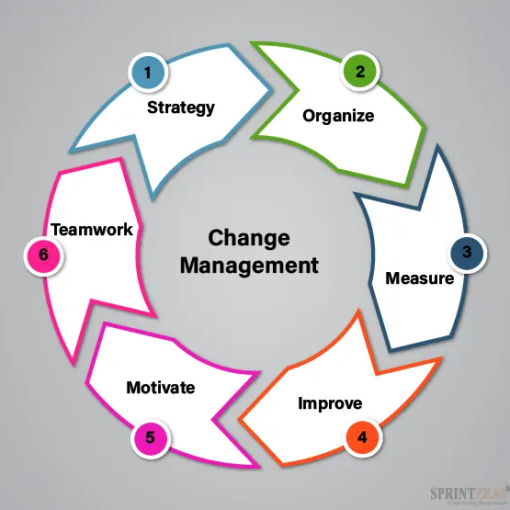In the ever-evolving landscape of digital solutions, platform applications have emerged as versatile and transformative tools that cater to a myriad of industries. From healthcare to finance and beyond, these applications act as the linchpin of modern business operations. This comprehensive guide delves into the intricacies of platform applications, their evolution, advantages, challenges, and the pivotal role they play in shaping the future of technology.
1. Introduction
Platform applications, often referred to as “platform apps,” are dynamic software solutions designed to serve a broad range of purposes. Unlike traditional single-purpose applications, platform apps offer a multifaceted approach, providing users with a comprehensive suite of tools and functionalities.
2. Understanding Platform Applications
2.1 Defining Platform Applications
Platform applications are software solutions that act as a foundation for diverse functionalities, allowing users to build, customize, and deploy a variety of applications within a unified environment.
2.2 Key Characteristics
- Versatility: Platform applications are known for their versatility, accommodating various needs and functions.
- Scalability: They can scale with the growing demands of users and evolving business requirements.
- Integration: Seamless integration with other systems and applications is a hallmark of platform apps.
2.3 Versatility Across Industries
Aapplications find utility across diverse industries, from streamlining healthcare processes to enhancing e-commerce experiences and optimizing financial services.
3. The Evolution of Platform Applications
3.1 Early Days: Single-Purpose Platforms
Early applications were often designed for specific industries or functions. They laid the groundwork for the more expansive solutions seen today.
3.2 Modern Era: Multi-Purpose Platforms
In the contemporary landscape, applications have evolved into multi-purpose tools, catering to the complex needs of businesses across various sectors.
3.3 The Rise of Low-Code and No-Code Platforms
Low-code and no-code platforms have further democratized app development, allowing users with varying technical expertise to contribute to the creation of platform applications.
4. Key Components of a Robust Platform Application
4.1 User-Friendly Interface
A user-friendly interface ensures accessibility for users with different levels of technical expertise, promoting wider adoption.
4.2 Scalability and Flexibility
Scalability is vital to accommodate the increasing number of users and the growing complexity of business operations. Flexibility allows for customization based on unique business needs.
4.3 Seamless Integration Capabilities
The ability to seamlessly integrate with other applications and systems enhances the overall efficiency of a platform application.
5. Industries Transformed by Platform Applications
5.1 Healthcare
In the healthcare sector, applications facilitate collaboration among medical professionals, streamline patient data management, and enhance the overall quality of care.
5.2 E-Commerce
applications in e-commerce enable businesses to manage inventory, process transactions, and provide a seamless shopping experience for customers.
5.3 Financial Services
The financial industry benefits from applications by automating complex processes, ensuring compliance, and enhancing data security.
6. Advantages and Challenges of Platform Applications
6.1 Advantages
- Cost-Efficiency: applications can be more cost-effective than building multiple single-purpose applications.
- Centralized Control: They provide centralized control over various functions, simplifying management.
- Rapid Development: The use of low-code and no-code platforms accelerates the development process.
6.2 Challenges
- Integration Complexity: Integrating diverse functionalities can be complex and requires careful planning.
- Learning Curve: Users might face a learning curve, especially with more robust applications.
7. Building Your Own Platform Application
7.1 Identifying Purpose and Goals
Clearly defining the purpose and goals of your platform application is crucial for successful development and implementation.
7.2 Choosing the Right Development Approach
Deciding between low-code, no-code, or traditional development approaches depends on your project requirements and team expertise.
7.3 Designing for User Experience
Prioritize user experience in the design phase to ensure widespread adoption and satisfaction.
8. SEO Best Practices for Platform Applications
8.1 Optimizing Content for Search Engines
Crafting content that reflects the diverse functionalities of the platform application improves search engine visibility.
8.2 Mobile Responsiveness
Given the prevalence of mobile users, ensuring the platform application is mobile-responsive is paramount for SEO.
8.3 Quality Backlink Strategies
Building a robust backlink profile from reputable sources enhances the online visibility of the platform application.
9. Platform Applications and the Future of Technology
9.1 Integration with Emerging Technologies
It will increasingly integrate with emerging technologies such as artificial intelligence and augmented reality.
9.2 The Role of Artificial Intelligence
Artificial intelligence will play a pivotal role in enhancing the capabilities and functionalities of applications.
9.3 Anticipating Future Trends
Staying abreast of industry trends and user needs will be crucial for the continued success of applications.
10. The Human Touch in Platform Application Development
10.1 Understanding User Needs
Despite the technical complexities, understanding and addressing user needs remain at the core of successful platform application development.
10.2 Continuous Improvement through User Feedback
Ongoing user feedback loops contribute to continuous improvement, ensuring that the platform application aligns with evolving user expectations.
10.3 Empowering Users with Training and Support
Providing comprehensive training and ongoing support empowers users to make the most of the platform application, minimizing disruptions.
11. Conclusion
In the era of digital transformation, platform applications stand out as catalysts for innovation and efficiency. As businesses navigate the complex landscape of modern technology, embracing the power of applications is not just a choice; it’s a strategic imperative. From streamlining operations to fostering collaboration, these applications are shaping the future of how we work and interact with technology.
SAP Business Technology Platform (BTP)
FAQs
- What makes platform applications different from traditional single-purpose applications?
- applications are versatile, offering a comprehensive suite of tools and functionalities, while traditional applications are designed for specific purposes.
- How do applications benefit the healthcare industry?
- In healthcare, applications facilitate collaboration among medical professionals, streamline patient data management, and enhance the overall quality of care.
- What challenges might businesses face when implementing applications?
- Businesses may face challenges in integrating diverse functionalities and managing the learning curve for users, especially with more robust applications.
- Is building a platform application more cost-effective than developing multiple single-purpose applications?
- Yes, building a platform application can be more cost-effective, as it provides centralized control and avoids the need for multiple standalone applications.
- How can businesses stay ahead of future trends in platform application development?
- Staying abreast of industry trends, user needs, and integrating emerging technologies like artificial intelligence will help businesses anticipate and adapt to future trends.
You may be interested:





